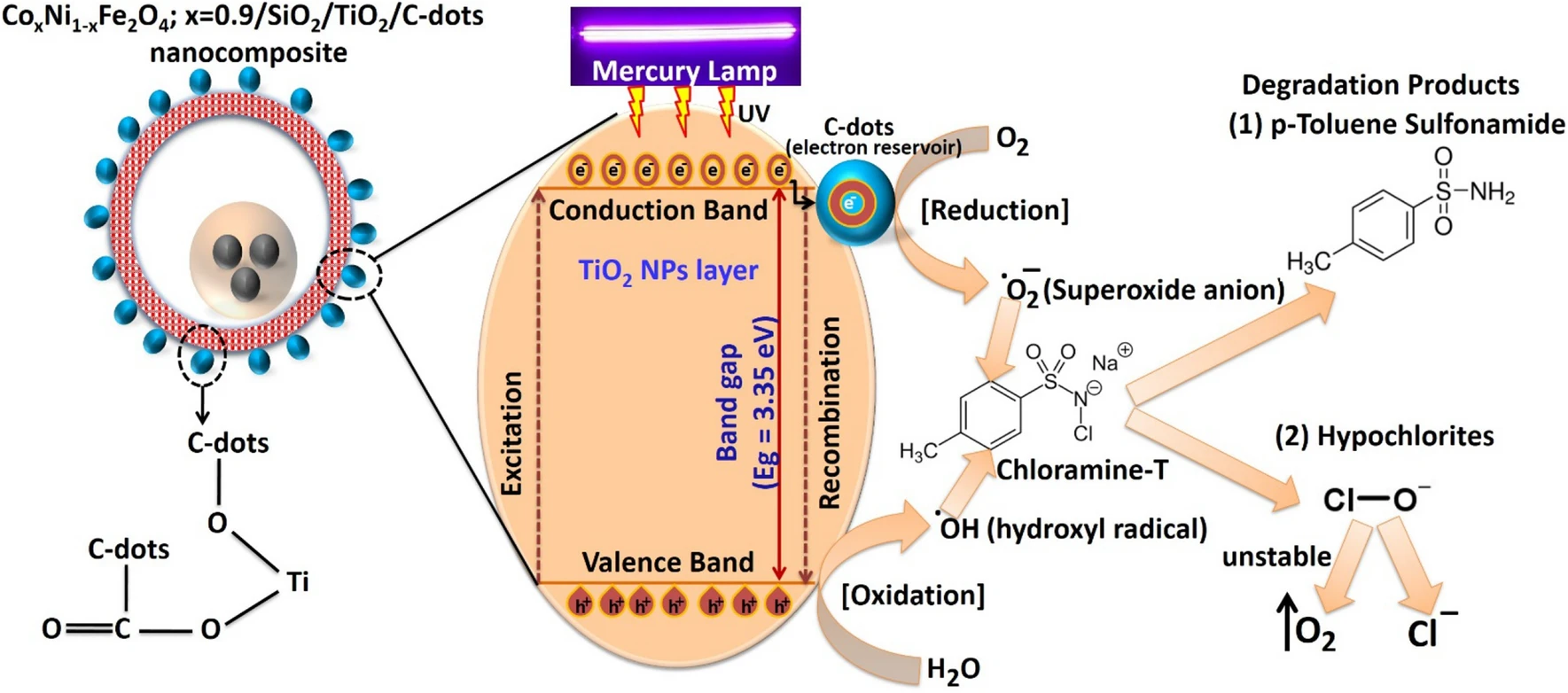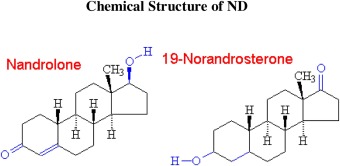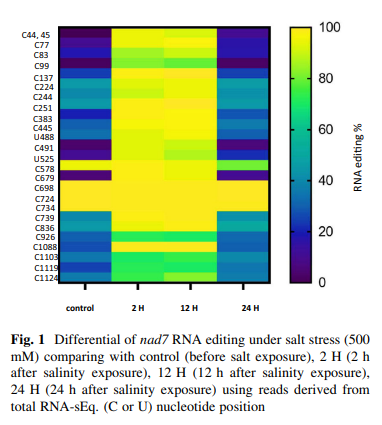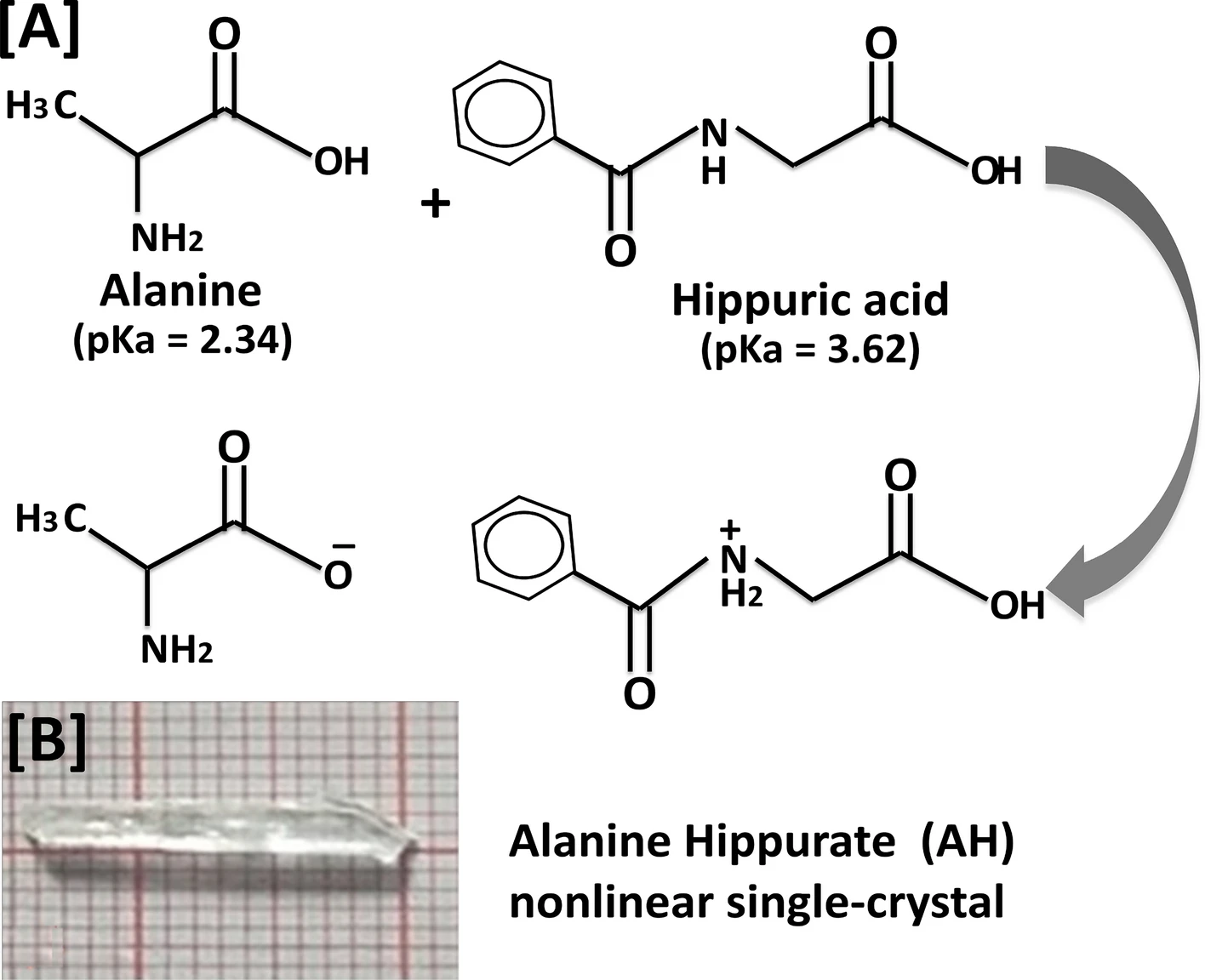
Carbon-dot-loaded CoxNi1−xFe2O4; x = 0.9/SiO2/TiO2 nanocomposite with enhanced photocatalytic and antimicrobial potential: An engineered nanocomposite for wastewater treatment
Water scarcity is now a serious global issue resulting from population growth, water decrease, and pollution. Traditional wastewater treatment plants are insufficient and cannot meet the basic standards of water quality at reasonable cost or processing time. In this paper we report the preparation, characterization and multiple applications of an efficient photocatalytic nanocomposite (CoxNi1−xFe2O4; x = 0.9/SiO2/TiO2/C-dots) synthesized by a layer-by-layer method. Then, the photocatalytic capabilities of the synthesized nanocomposite were extensively-studied against aqueous solutions of chloramine-T trihydrate. In addition, reaction kinetics, degradation mechanism and various parameters affecting the photocatalytic efficiency (nanocomposite dose, chloramine-T initial concentration, and reaction pH) were analyzed in detail. Further, the antimicrobial activities of the prepared nanocomposite were tested and the effect of UV-activation on the antimicrobial abilities of the prepared nanocomposite was analyzed. Finally, a comparison between the antimicrobial abilities of the current nanocomposite and our previously-reported nanocomposite (CoxNi1−xFe2O4; x = 0.9/SiO2/TiO2) had been carried out. Our results revealed that the prepared nanocomposite possessed a high degree of crystallinity, confirmed by XRD, while UV–Vis. recorded an absorption peak at 299 nm. In addition, the prepared nanocomposite possessed BET-surface area of (28.29 ± 0.19 m2/g) with narrow pore size distribution. Moreover, it had semi-spherical morphology, high-purity and an average particle size of (19.0 nm). The photocatalytic degradation efficiency was inversely-proportional to chloramine-T initial concentration and directly proportional to the photocatalyst dose. In addition, basic medium (pH 9) was the best suited for chloramine-T degradation. Moreover, UV-irradiation improved the antimicrobial abilities of the prepared nanocomposite against E. coli, B. cereus, and C. tropicalis after 60 min. The observed antimicrobial abilities (high ZOI, low MIC and more efficient antibiofilm capabilities) were unique compared to our previously-reported nanocomposite. Our work offers significant insights into more efficient water treatment and fosters the ongoing efforts looking at how pollutants degrade the water supply and the disinfection of water-borne pathogenic microorganisms. © 2020, The Author(s).



